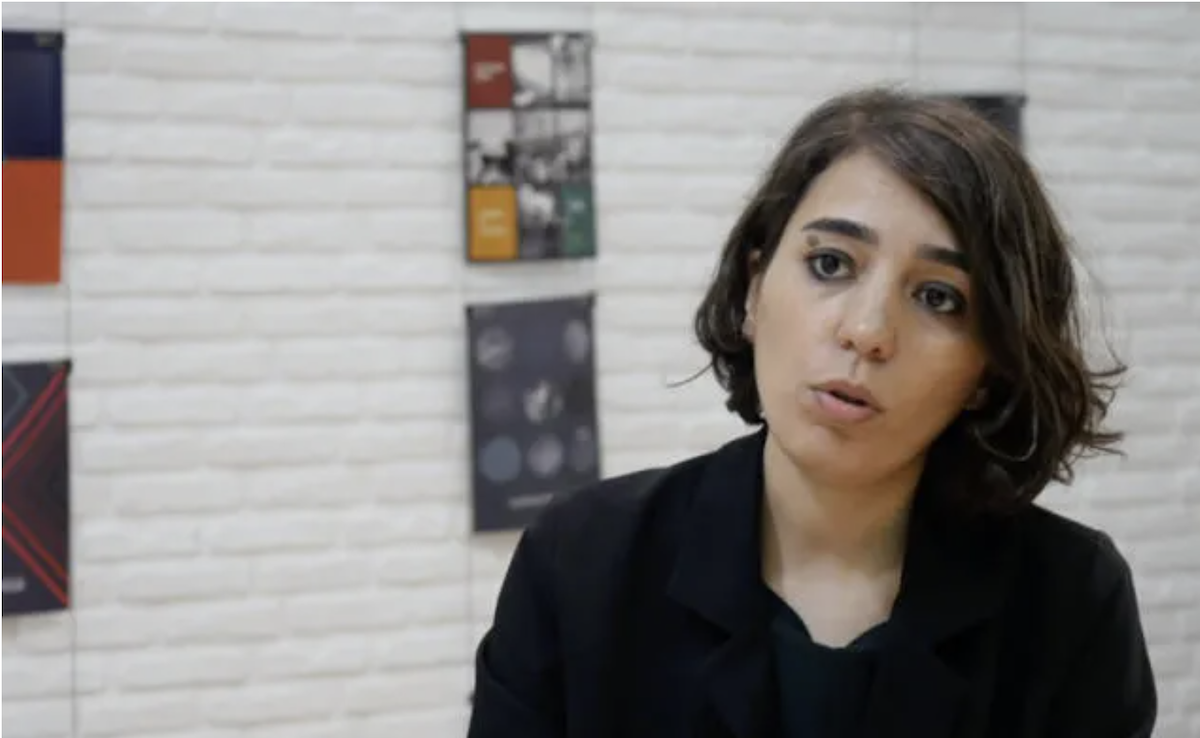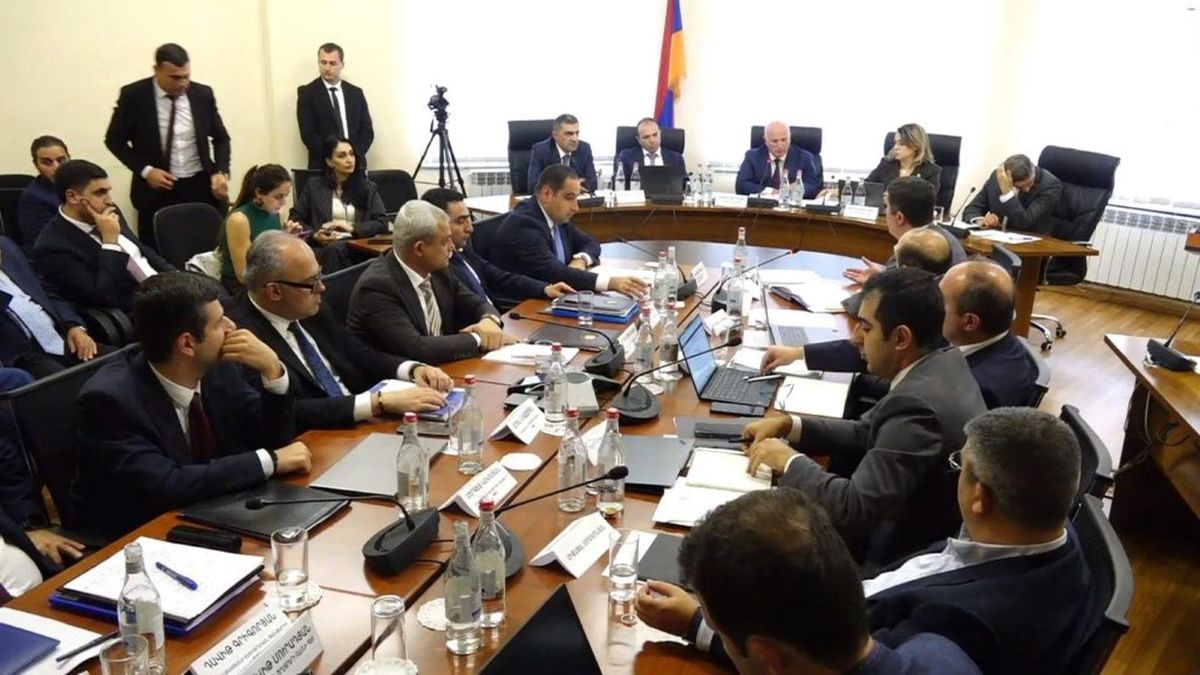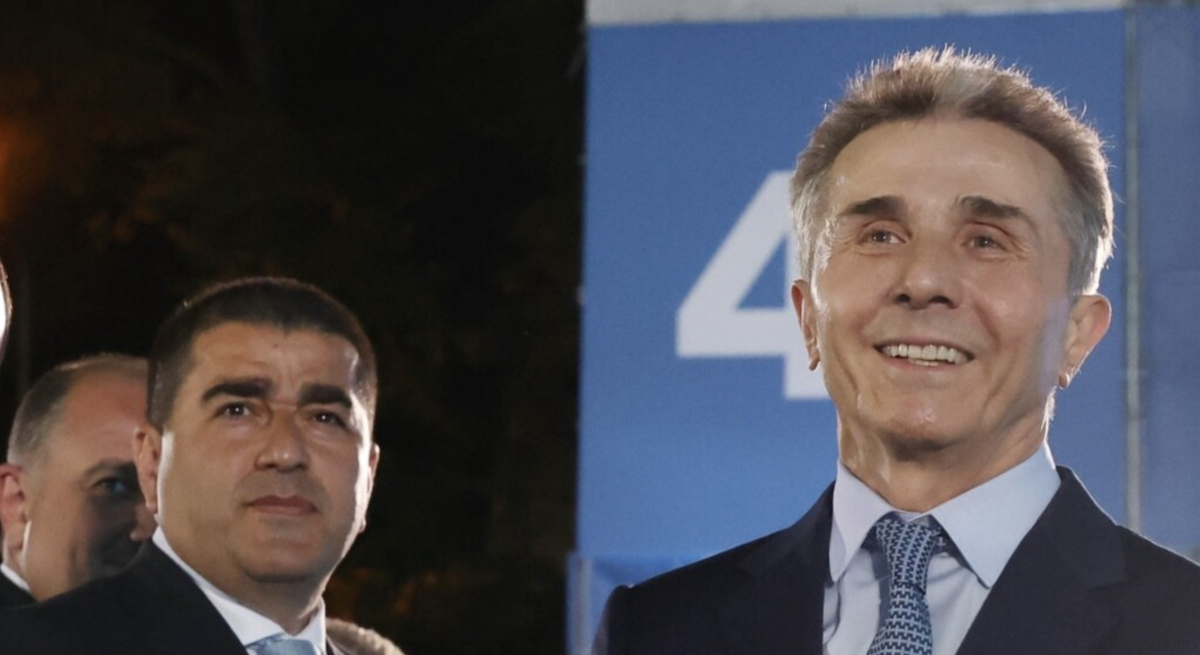The history of the Georgian political poster
Since independence was proclaimed in 1990, residents of Georgia have gone to parliamentary and presidential elections a total of 22 times. If one takes a look at the election posters glued to the walls in the streets, the whole modern history of the country will appear before your eyes.

Posters and billboards are a great way to reconstruct political history.
In the National Library of Georgia, there are more than 200 posters of Georgian election campaigns. One can trace the development of the country over the past 30 years through these faded prints: how political slogans changed and what society demanded of politicians.
These posters demonstrate the palette of political parties and organizations which appeared and disappeared without a trace, how their symbols changed and what esthetic reigned in the creation of party logos.
One can also see how the expressions of politicians have changed: in the 1990s, faces were more severe and stern looking, with eyes full of sorrow and concern, whereas now, the faces have begun to smile and their gazes emit more optimism.
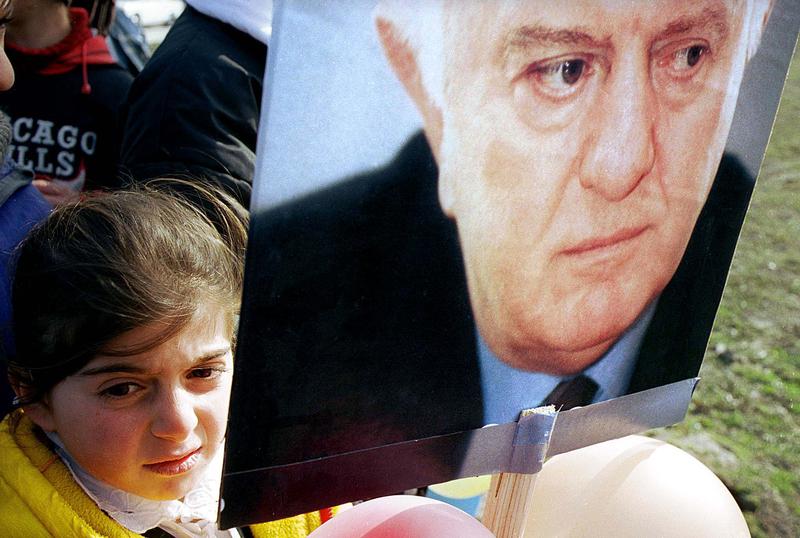
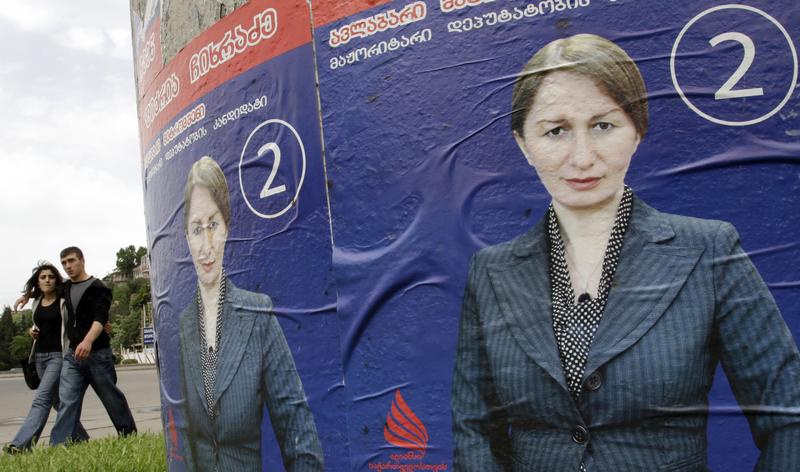
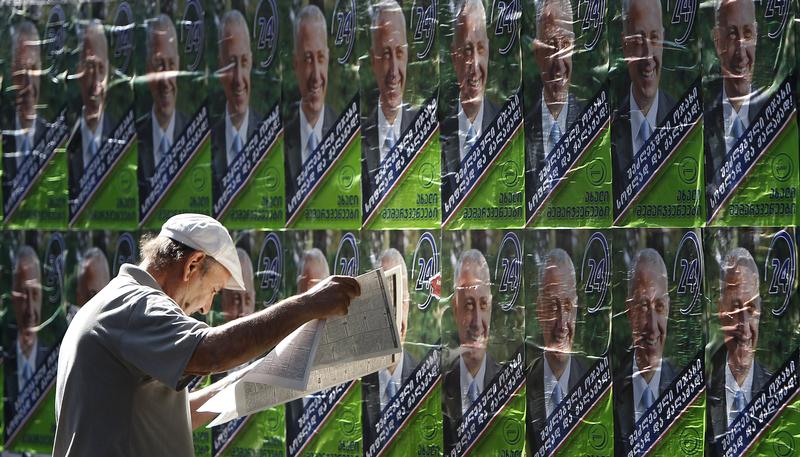
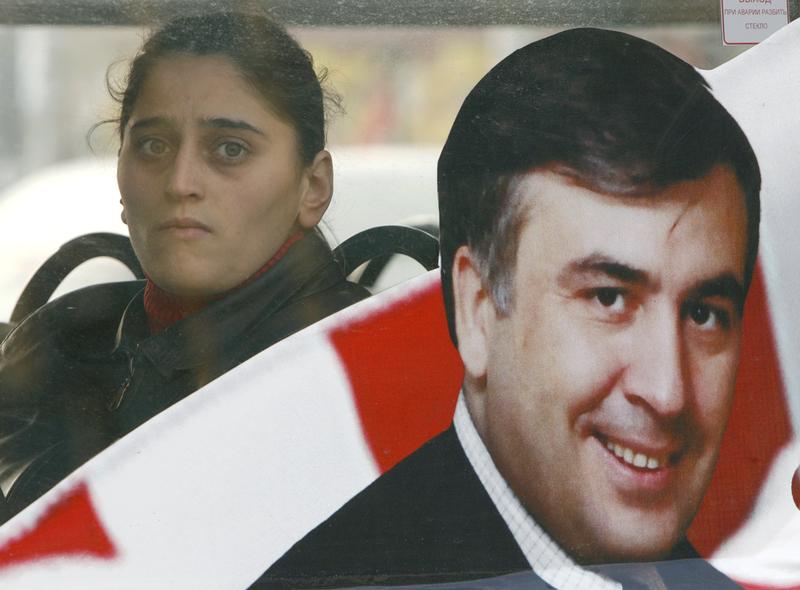
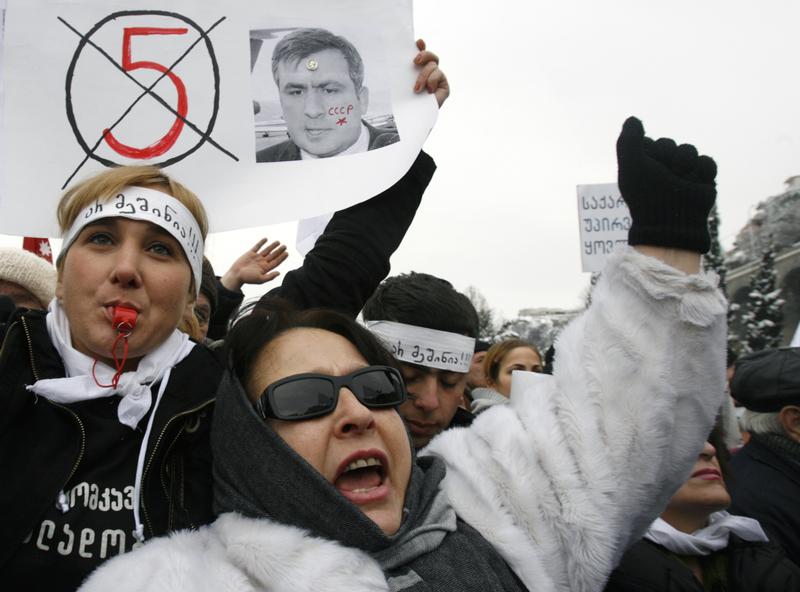
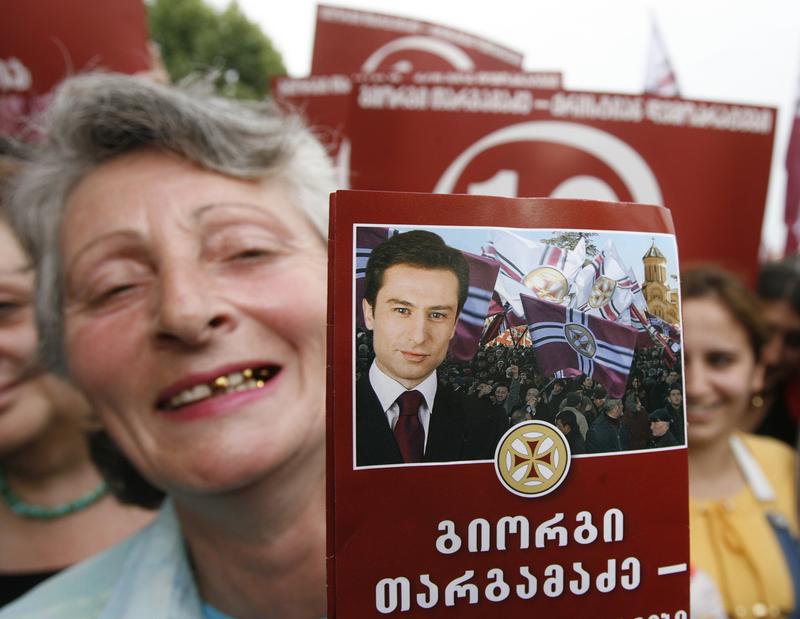
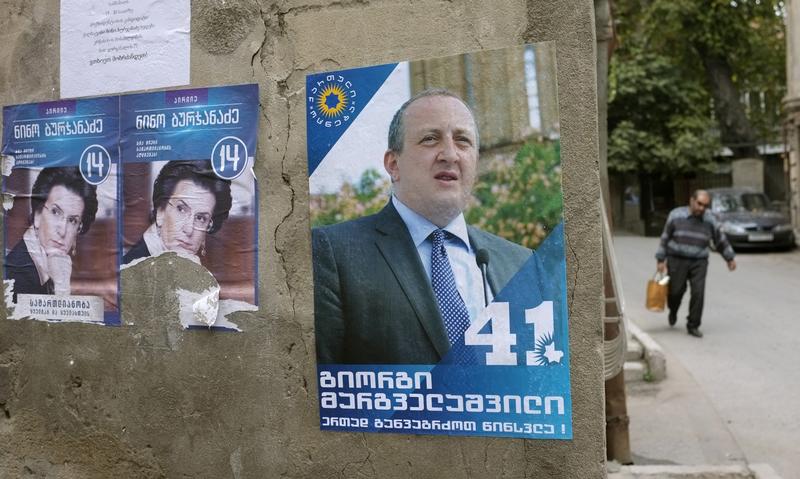
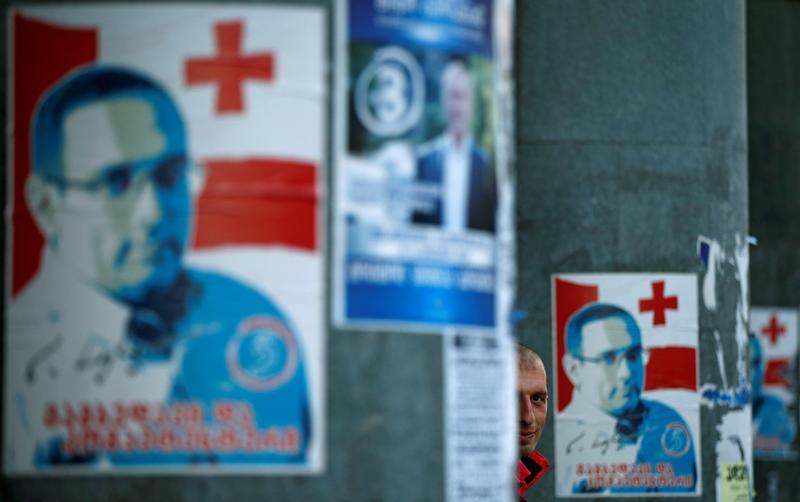
Campaign posters are also an archive of political unions and political rivalries. One can easily see how political associations based on political principles were created less often than situational alliances.
Yesterday’s allies became the enemies of the next day, and one can also see the opposite – how political enemies made political pacts with one another.
Many politicians in the recent past who had a promising political career have left politics.
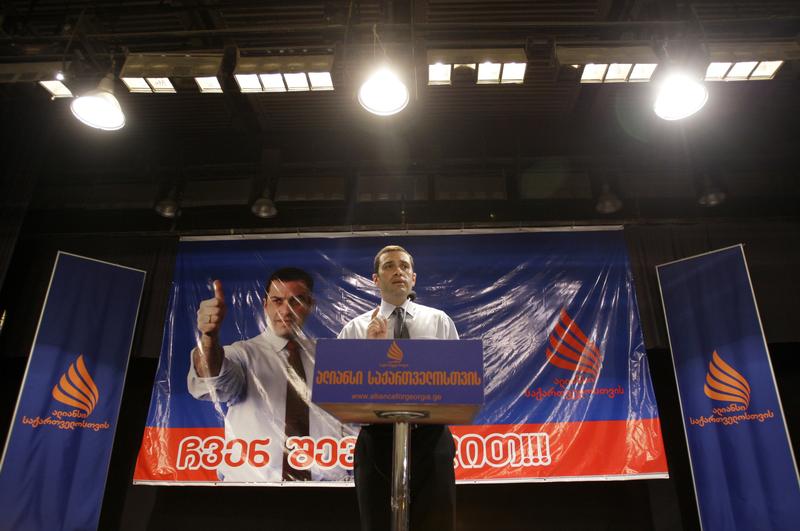
While others, despite their failures, have remained in the political arena.
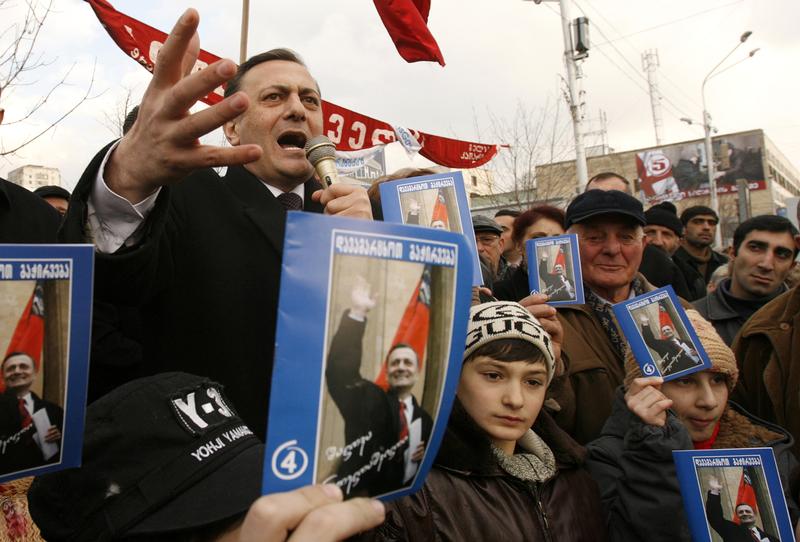
Up until today, several streets and building walls remain a sort of chronicle of the country’s political history: in Georgia it is only recently that the practice of ‘cleaning up’ public areas after elections and removing posters has started to occur.
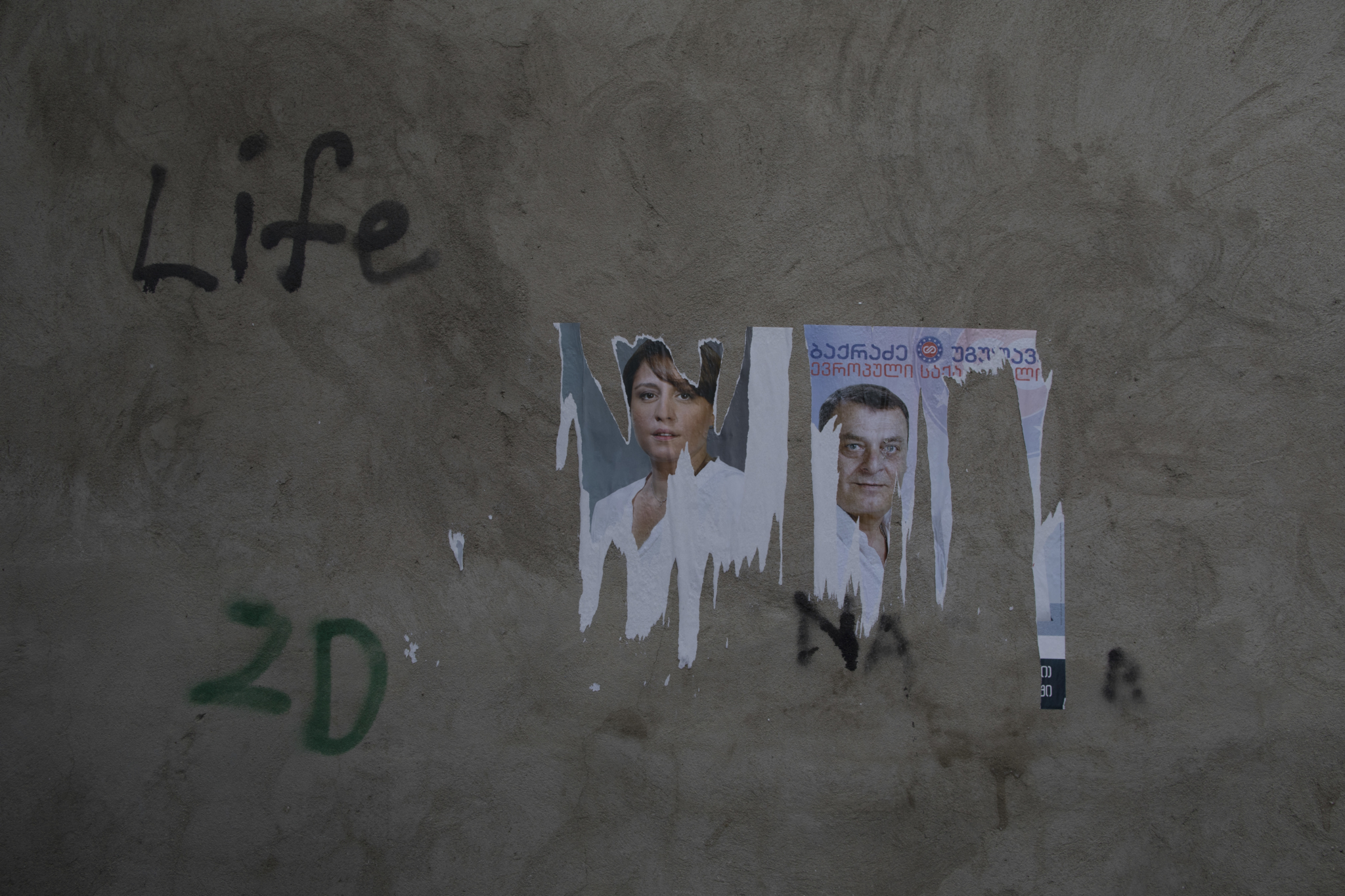

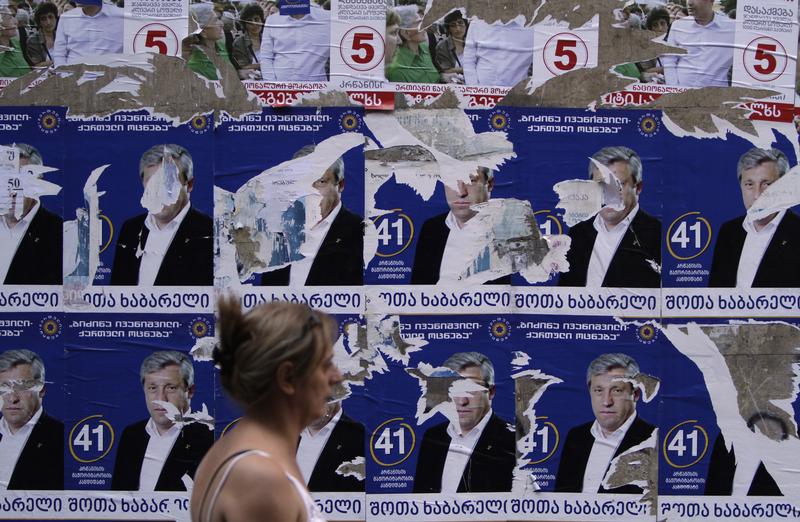
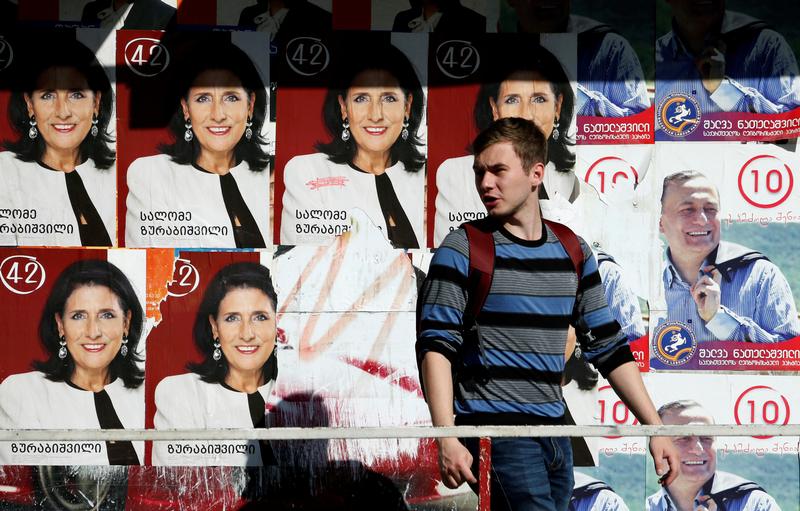

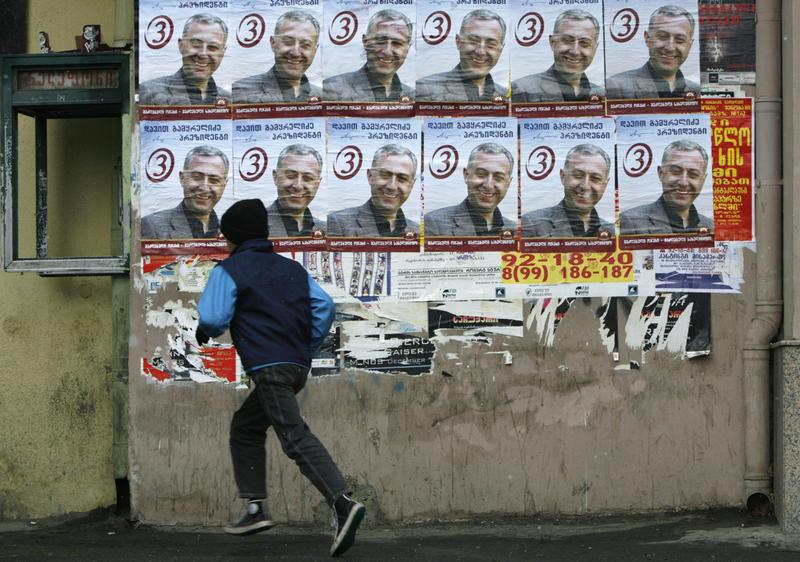
‘Let the skies of Iberians shine forth’ – eating beans and welfare
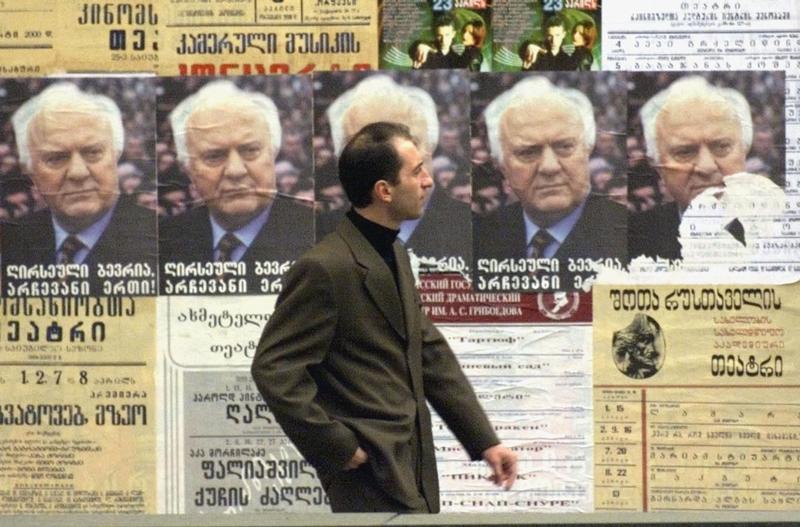
This pre-election poster was part of an election campaign and appeared in Georgia in the early 1990s. In that period there was no modern printing bases and artists weren’t up to the job.
The history of the political poster in independent Georgia begins with a black and white poster of the ‘Round Table – Free Georgia’, where one can see a girl waving the state flag.

The poster lacks quality, printed on thin, crumbly paper which is similar to a xerox. This illustrates the epoch pretty well – a chaotic phase of the rise of the national movement which is “overloaded” by heroic faces.
In the posters of the 1990s, there are many national slogans, citations from Georgian literary works and poetry.
For example: “Vote for the Rustaveli Society if you want to be redeemed from slavery! Vote for the Rustaveli Society if you desire the decisive destruction of the Soviet system! Vote for the Rustaveli Society if you want more opportunity for talent!”
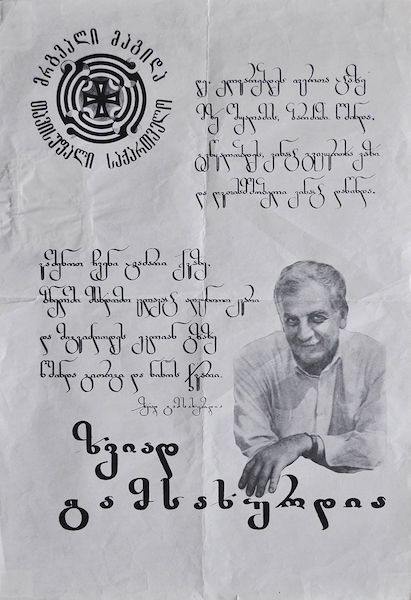
The years after that, people were less enthusiastic about poetry. Armed figures appeared on election posters in dark-tinted glasses:
“I will remind the enemy that democracy doesn’t mean eating beans,” – a fragment of a text printed on a pre-election poster for Jaba Ioseliani, an MP candidate for Nadzaladev district.
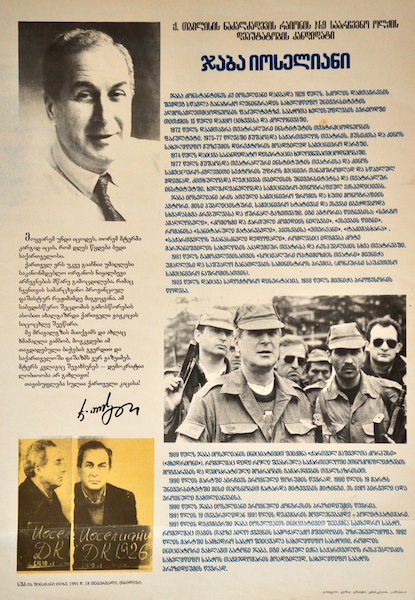
The Citizens’ Alliance of Eduard Shevardnadze tried to enliven the dry, two-colored election palette of the time. In the footsteps of the famous music video ‘Rejoice’, color posters were printed with a smiling Georgian family, which promised prosperity to the population.

‘Georgia without Shevardnadze’ – ‘Together, we will fulfill the Georgian dream’.
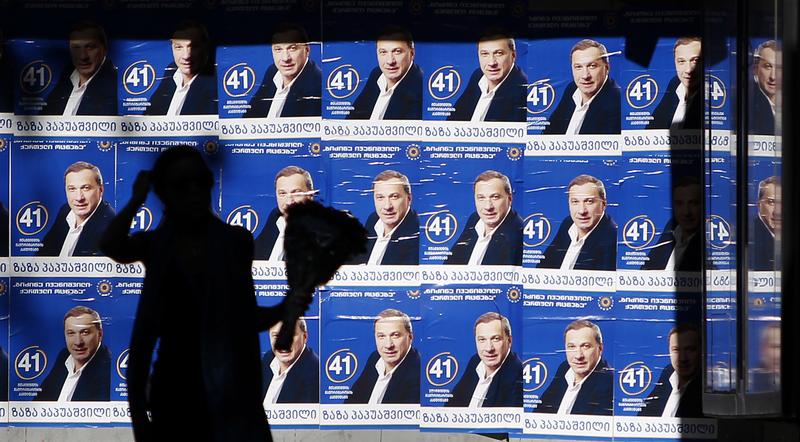
The slogan which brought success to the 35-year-old representative of Tbilisi’s sakrebulo (City Council), Mikheil Saakashvili, sounded thus: ‘A Georgia without Shevardnadze, a Georgia without corruption’.
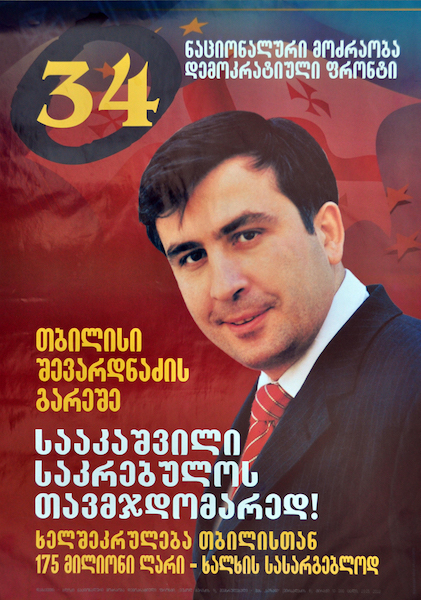
These words were the leitmotif of political life in Georgia in the subsequent period: ‘We won’t stop construction’, ‘Unification and elevation of Georgia’, ‘Georgia without poverty’, ‘Still much to do!’ and so on.
Mikheil Saakashvili’s team brought a lot of red into Georgian election posters, with laconic, memorable slogans – specific promises oriented to specific social groups, as well as high-quality printing. However, from a graphic and artistic point of view, the election posters of that period were not different for their originality – they portrayed the same smiling politician, as per tradition, and the voting number and slogan.
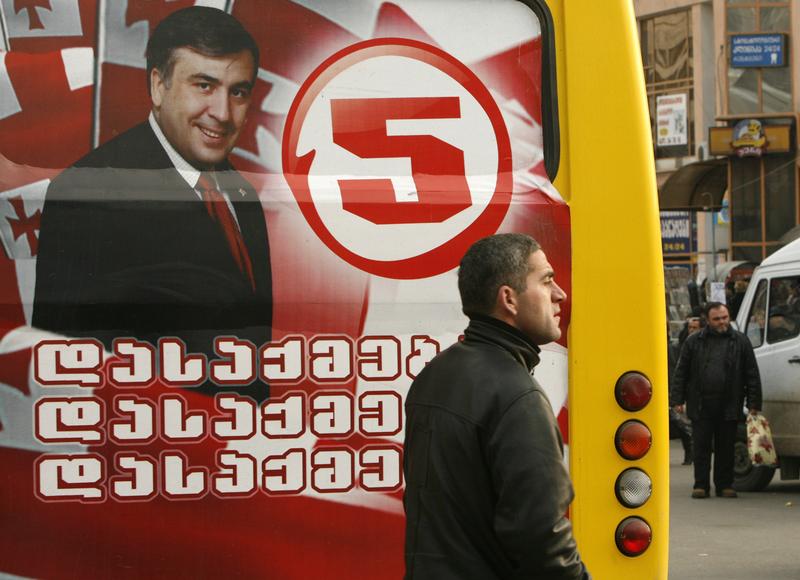
Regarding pre-election campaigns, not much has changed after the Georgian Dream came to power. The bright-red color was changed to blue. The posters increased in size and were of a higher quality. The slogans returned to the same, good-willing nationalist sentiments: ‘Together we will fulfill the Georgian dream’.
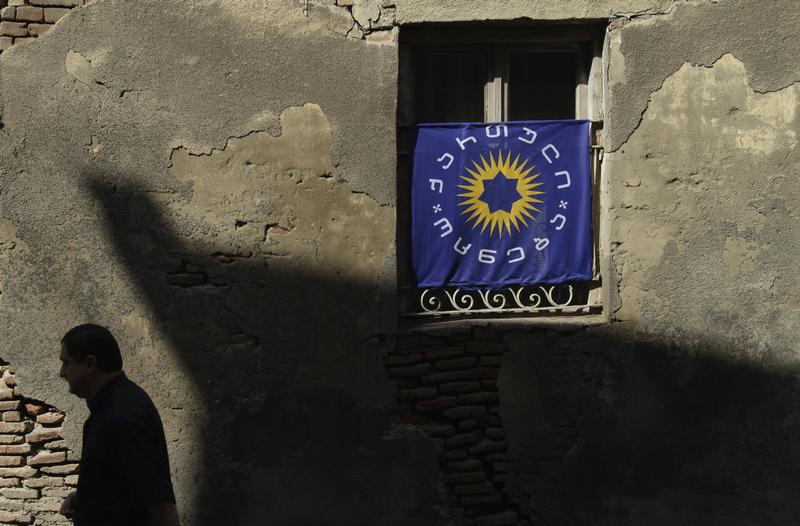
Today, politicians make more concrete promises with their posters. Instead of ‘the elevation of Georgia’, they promise voters higher pensions, lower taxes, employment and quality healthcare. Poems and patriotic slogans have been exchanged for serious faces and conversations about concrete problems.



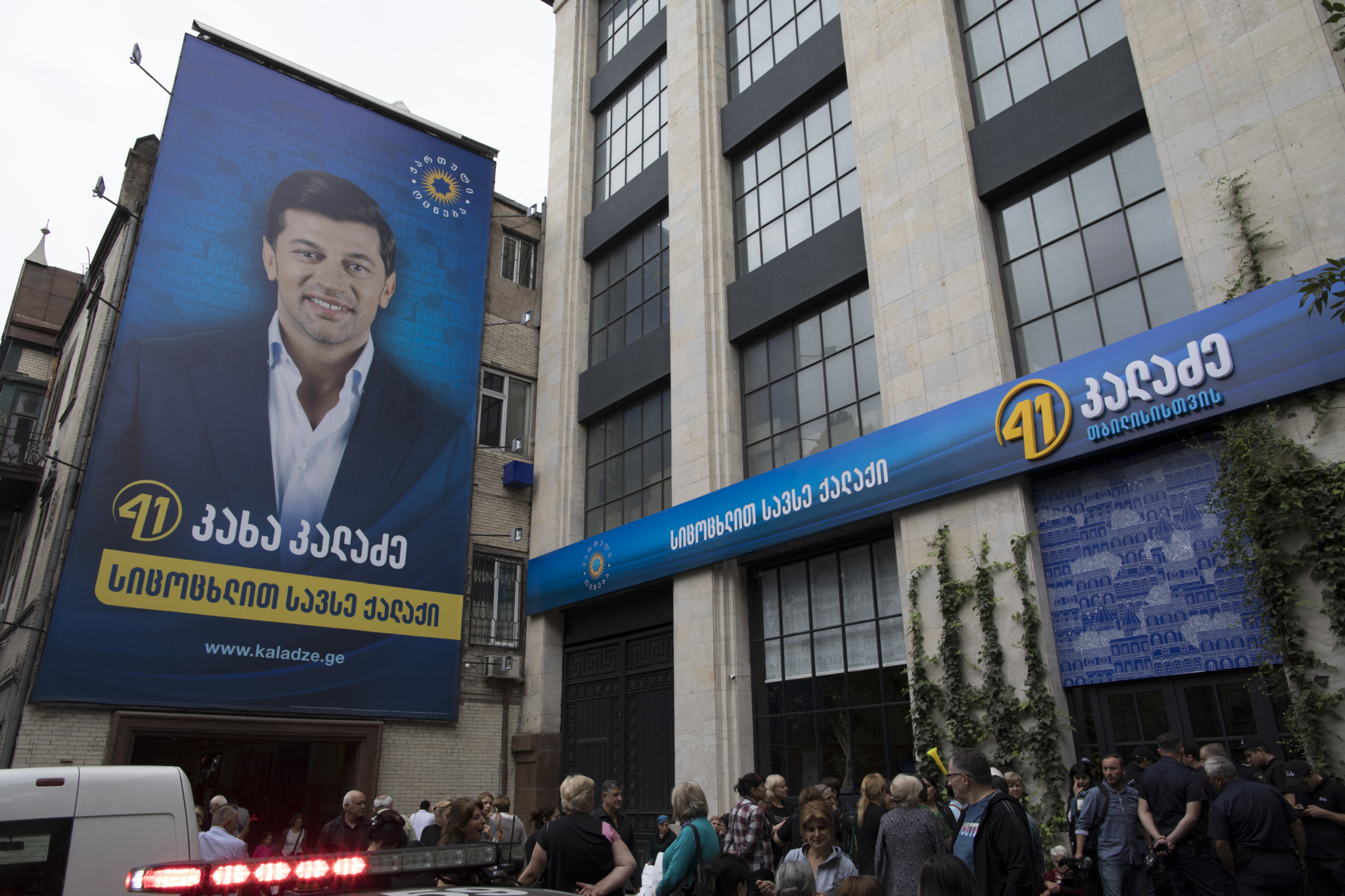
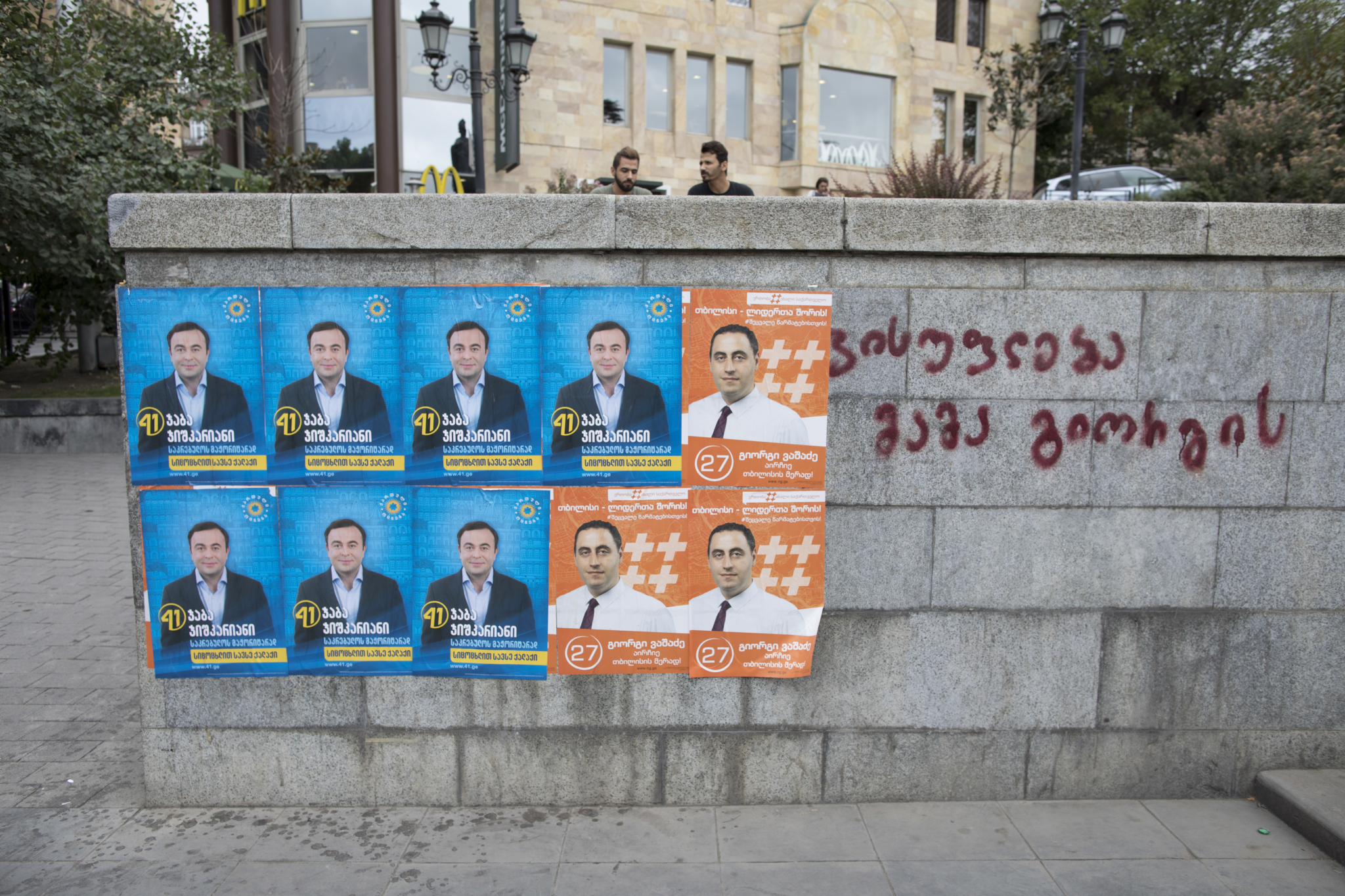
However, it is evident from these promises just at what stage of development Georgia and the Georgian voter are on: politicians and populists often use the lack of political information held by voters and give unreal, irresponsible promises: a poster from the Georgian-Democratic Movement promises free water and gas for ten tetri per cubic meter and electricity for five tetri per kilowatt.
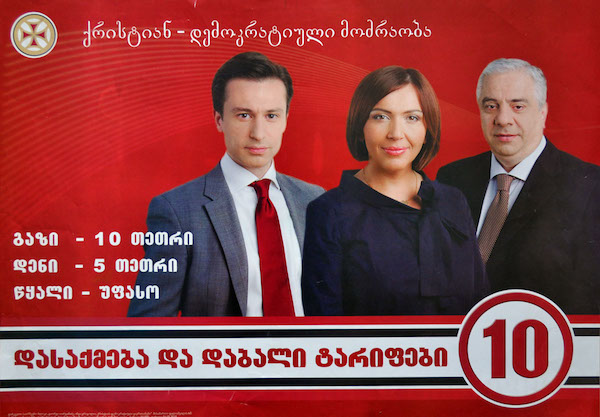
Can a poster change the world?
As a whole, the Georgian election poster is a rather boring affair – the same smiling politician, the same slogans and the party number.
Georgian parties do not use graphic design and are not too concerned about the visual effect. They try to be as simple as possible – it’s easy to bring to the voter what they want to say without additional symbols and ‘unnecessary’ art.
The global trend is also such: succinct, with basic ideas expressed in a few words. However, for some reason, western posters are much more interesting from a visual point of view.
Can a poster change the world? It probably can, if they’re like Shepard Fairey’s ‘Hope’ or Scott Hensen’s ‘Progress’v.
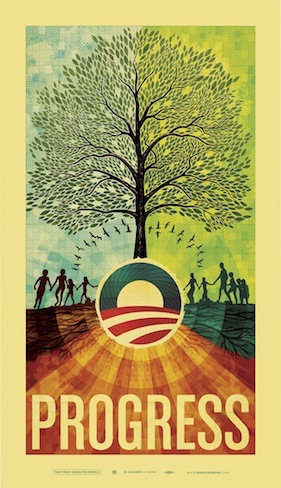
Fairey’s poster catered brilliantly to social demands – after the eight-year administration of George Bush, Americans wanted something more inspiring.
It went viral. Many believe that this poster convinced more than one voter to vote for Obama.
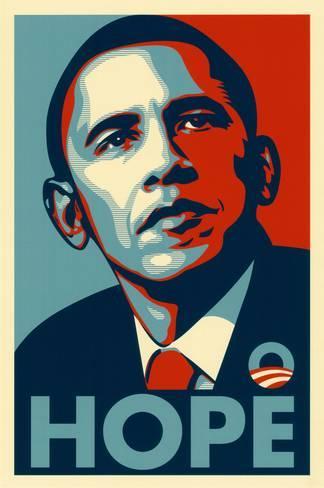
This poster changed the history of American election art. Fairey’s style was used by civic activists, for example, in support of Julian Assange. On his poster, the word ‘Hope’ was replaced by the word ‘Hero’.
Despite the fact that technology and the Internet reign supreme in the modern era, printed posters inspire artists to create masterpieces and, according to experts, this will continue for a long time as it’s difficult to bring computer monitors to gatherings.
As long as people have political views that they are ready to defend, printed political posters and their unique forms of expressing political ideas will remain fundamental tools.










